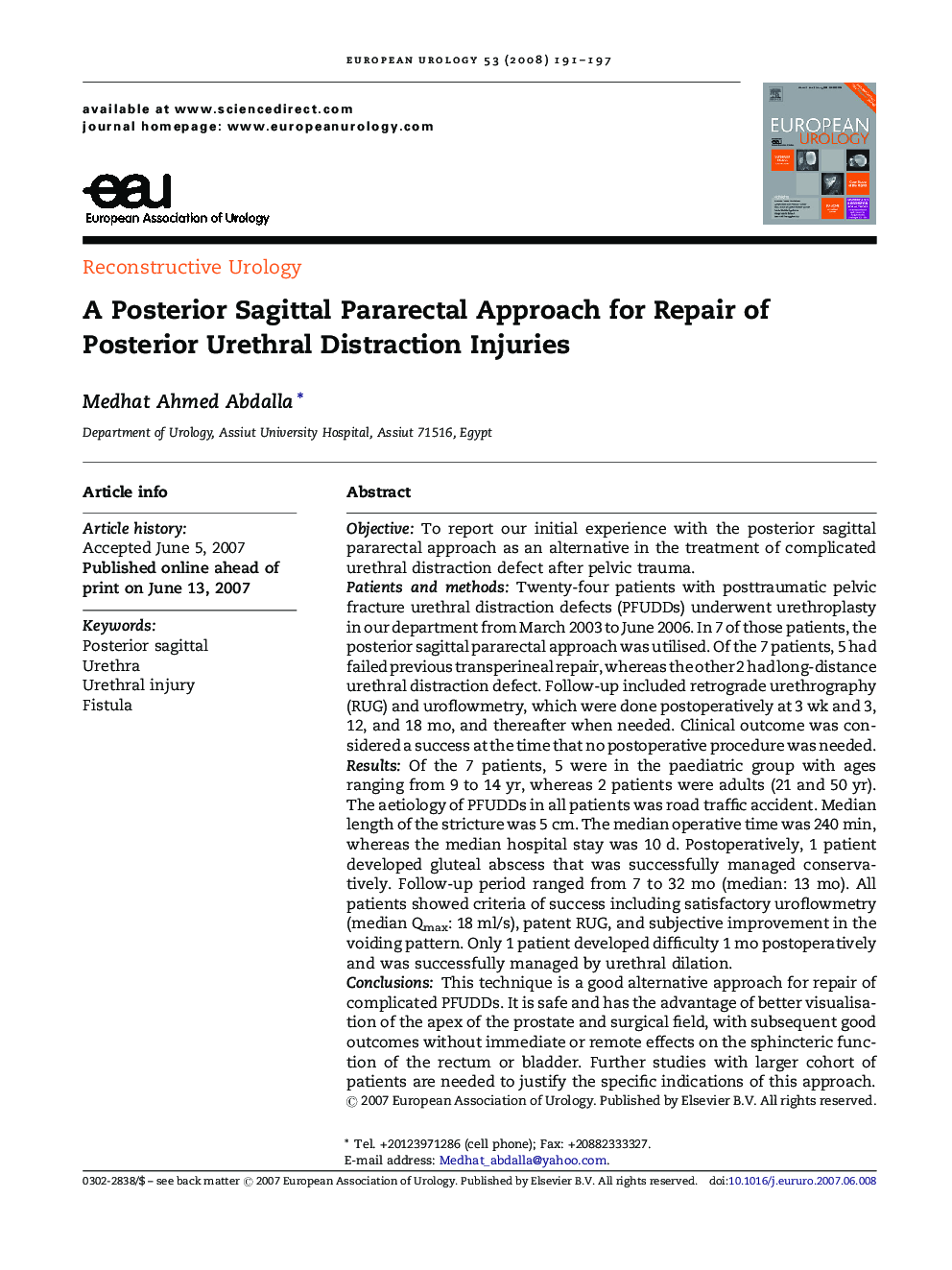| Article ID | Journal | Published Year | Pages | File Type |
|---|---|---|---|---|
| 3927710 | European Urology | 2008 | 7 Pages |
ObjectiveTo report our initial experience with the posterior sagittal pararectal approach as an alternative in the treatment of complicated urethral distraction defect after pelvic trauma.Patients and methodsTwenty-four patients with posttraumatic pelvic fracture urethral distraction defects (PFUDDs) underwent urethroplasty in our department from March 2003 to June 2006. In 7 of those patients, the posterior sagittal pararectal approach was utilised. Of the 7 patients, 5 had failed previous transperineal repair, whereas the other 2 had long-distance urethral distraction defect. Follow-up included retrograde urethrography (RUG) and uroflowmetry, which were done postoperatively at 3 wk and 3, 12, and 18 mo, and thereafter when needed. Clinical outcome was considered a success at the time that no postoperative procedure was needed.ResultsOf the 7 patients, 5 were in the paediatric group with ages ranging from 9 to 14 yr, whereas 2 patients were adults (21 and 50 yr). The aetiology of PFUDDs in all patients was road traffic accident. Median length of the stricture was 5 cm. The median operative time was 240 min, whereas the median hospital stay was 10 d. Postoperatively, 1 patient developed gluteal abscess that was successfully managed conservatively. Follow-up period ranged from 7 to 32 mo (median: 13 mo). All patients showed criteria of success including satisfactory uroflowmetry (median Qmax: 18 ml/s), patent RUG, and subjective improvement in the voiding pattern. Only 1 patient developed difficulty 1 mo postoperatively and was successfully managed by urethral dilation.ConclusionsThis technique is a good alternative approach for repair of complicated PFUDDs. It is safe and has the advantage of better visualisation of the apex of the prostate and surgical field, with subsequent good outcomes without immediate or remote effects on the sphincteric function of the rectum or bladder. Further studies with larger cohort of patients are needed to justify the specific indications of this approach.
